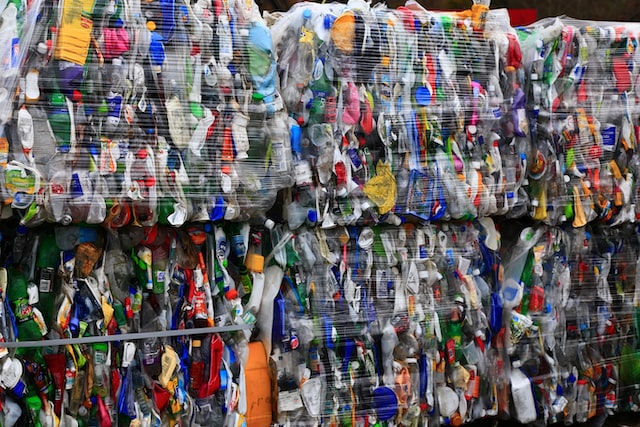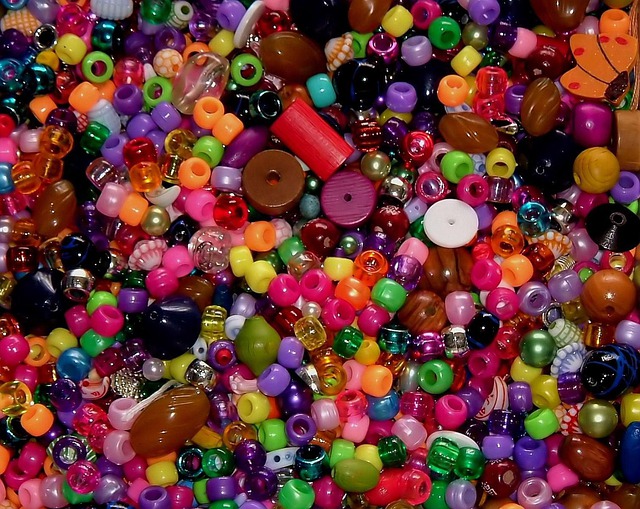Introduction – Upcycling vs Recycling
Upcycling plastic is reusing plastic waste to create new, useful products. In contrast to recycling, which involves melting and molding the plastic into new shapes, the upcycling process retains the original material to create new products.

Upcycling plastic has several benefits over traditional recycling methods. It requires less energy to upcycle plastic than recycling, resulting in a lower carbon emission product. Upcycling plastic also reduces pollution from manufacturing and conserves resources, as it reduces the need for new plastic products.
Why Should You Upcycle Plastic Waste?
As our world increasingly relies on technology, the amount of plastic waste we generate each day is growing at an alarming rate. While it is possible to recycle some plastics, many end up in landfills, where they can take centuries to decompose. Upcycling is a process of repurposing waste materials into new products, and it offers several benefits over traditional recycling.
Upcycling plastic waste prevents it from ending up in landfills and requires less energy than manufacturing new plastic products from scratch. In addition, upcycled products often have a higher quality than recycled products because they are made with care and attention. Finally, upcycling helps support local economies as small businesses and artisans are often creating these new products.
So next time you’re about to throw away that old plastic water bottle, think about how you could upcycle it into something new and useful. By making a few small changes in your daily habits, you can help to reduce the amount of plastic waste in our landfills.
What Are The Differences Between Plastic Upcycling And Recycling?
Recycling plastic involves breaking it down into its parts and then using those parts to create new products. Upcycling plastic, on the other hand, involves using the plastic itself to create new products. Both recycling and upcycling can potentially reduce the amount of plastic waste in landfills, but there are some key differences between the two processes.
When plastic is recycled, it is first crushed into small pieces. These pieces are then heated until they melt and can be shaped into new products. The quality of the recycled plastic is often lower than that of the original material, and you can only use it to create certain products. Upcycled plastic, on the other hand, retains the properties of the original material.
This means you can create various products, including some identical to those made from virgin plastic. However, upcycling requires more thoughtfulness and creativity than recycling.
5 Ideas For Upcycling Plastic
Here are 5 quick ideas for upcycling plastic. Do you need more upcycling ideas? Check out ShrinkThatFootprint’s own guide on creating upcycled gifts.
- Plastic Bottle Planters: Plastic bottles, particularly large ones like those for soda or water, can be repurposed as planters. Simply cut the bottle in half, drill some holes in the bottom for drainage, and fill with soil and plants. This can be a fun project for children as well, and a great way to teach them about recycling and gardening.
- Plastic Bottle Caps Filling: Many caps are in fact not recyclable due to being the wrong kind of plastic. Use these as filler for bags or boxes. Look at #3 for what the filler lets you achieve.
- DIY Eco-Bricks: An eco-brick is a plastic bottle packed solid with non-biodegradable waste until it’s hard as a brick. These eco-bricks can be used to build furniture, walls, or even buildings. They are a great way to dispose of waste that cannot be recycled, but it’s also important to remember to reduce the amount of non-biodegradable waste we produce.
- Plastic Bag Yarn (Plarn): Plastic bags can be cut into strips and twisted into a durable yarn known as ‘plarn’. This plarn can then be knitted or crocheted into all kinds of items, from reusable grocery bags to waterproof mats.
- Plastic Container Organizers: Small plastic containers can be reused as organizers. They can be used to store office supplies like pens, pencils, paperclips, or in the kitchen to organize spices, tea bags, etc. Even in the garage, they can be used to store small items like screws, nails, and other tools.
- Art and Crafts: Plastic items can be upcycled into a wide variety of arts and crafts. For example, plastic bottle caps can be used to create colorful mosaics, plastic bags can be woven into baskets, and plastic bottles can be used to make sculptures or chandeliers. The possibilities are nearly endless and limited only by your creativity.
4 Benefits of Upcycling Plastic
Upcycling is taking plastic waste and turning it into something new and usable. You can do this in several ways, but the most common method is melting the plastic and then shaping it into a new product. Upcycling plastic has several benefits, both for the environment and businesses.
First, upcycling plastic helps to reduce waste. Every year, millions of tons of plastic waste are produced, and only a fraction is recycled. Throwing plastic away seems like the best solution, but it ends up in a landfill that takes hundreds of years to decompose. If we recycle this plastic instead, we can prevent further waste from accumulating in landfills.
Second, upcycling plastic can save businesses money. Recycling plastic costs money, and the purer and more unbroken the plastic is, the more expensive it is to recycle. Upcycling, on the other hand, requires very little investment as all you need is basic equipment and raw materials access. This means that businesses can save money by upcycling their plastic waste instead of sending it off to be recycled.
Third, upcycling plastic can help to create new jobs and boost the economy. Upcycling plastic creates new employment opportunities, particularly in areas with little industry. This can knock on the local economy, as businesses in other sectors benefit from the increased footfall and spending generated by these new jobs.
Fourth, upcycling plastic benefits the environment. Plastic production releases harmful greenhouse gasses into the atmosphere, contributing to climate change. By upcycling this plastic instead of simply recycling it, we can help to offset some of these emissions. Additionally, many products made from recycled plastic require less energy and water to produce than their virgin counterparts, further reducing their environmental impact.
Upcycling plastic has several clear benefits. It helps to reduce waste, saves businesses money, creates new jobs, boosts the economy, and benefits the environment. With so many positive impacts, it’s clear that upcycling is an important part of tackling the global issue of plastic pollution.

Plastic Upcycling Tips
Plastic is one of the world’s most versatile and commonly used materials. It’s strong, lightweight, and durable, making it ideal for everything from packaging to construction. However, plastic also poses a serious threat to the environment. It takes centuries to decompose, and when it finally breaks down, poisonous chemicals extricate into the air and ground.
Plastic waste is a major contributor to climate change, and it’s estimated that there will be more plastic in the ocean than fish by 2050. But there is hope. Plastic can be recycled and upcycled into new products, and there are many ways to do it yourself. Here are some tips:
- Start by sorting your plastics into different categories. There are seven different types of plastic, each with its recycling symbol.
- Once you’ve sorted your plastics, see if there’s a local Plastic Recycling Center where you can take them. If not, check with your municipality to see if they have a pick-up program. You can always recycle your plastics at a regular recycling facility if all else fails.
- You can use plastic to make all sorts of things, from jewelry to furniture. Get creative and upcycle your plastics into something new and unique.
- Don’t forget to reduce your use of plastic as well! Bring reusable bags to the store, invest in a reusable water bottle, and say no to disposable straws. Every little bit helps.
Wrapping Up
In conclusion, upcycling plastic is a great way to reduce waste, save money, create jobs, and benefit the environment. It’s also an easy way to do your part in tackling the global issue of plastic pollution. So next time you’re about to throw away that plastic water bottle or take-out container, think about upcycling it instead.
